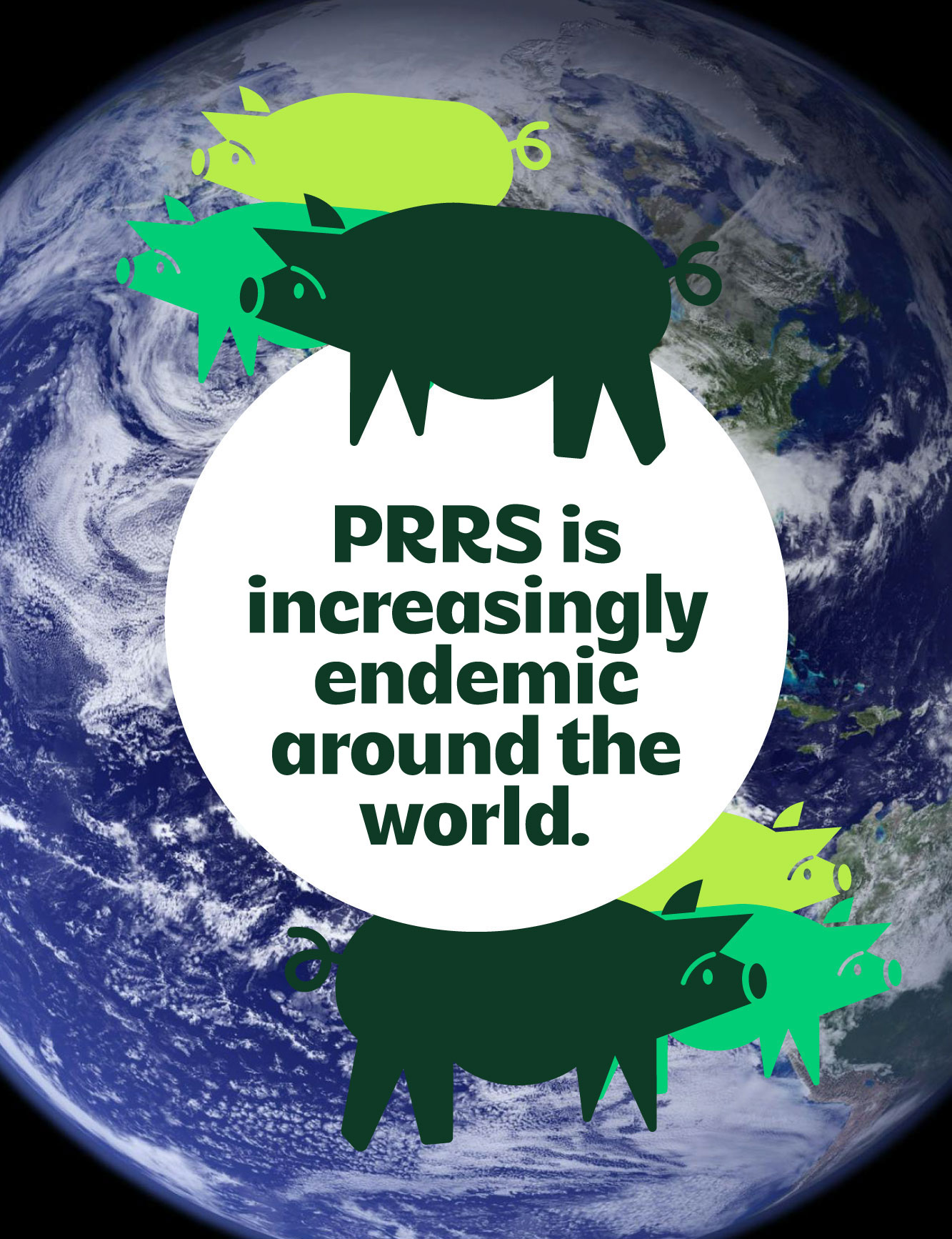First identified in the 1980s, Porcine Reproductive and Respiratory Syndrome (PRRS) has become increasingly widespread, affecting pig farms of all sizes and scales around the world, negatively impacting animal welfare.
Pigs infected with PRRS experience needless suffering, including breathing problems, fever, inability to eat, weak piglets and even death. PRRS also suppresses pigs’ immune systems, making it easy to develop other infections, just like when humans catch a cold and it turns into pneumonia.
Vaccines only reduce symptom severity, and PRRS can exacerbate secondary infections, increasing the need for antibiotics.
A recent Iowa State University study found that antibiotic use for piglets increased 379% during the first 15 weeks after a PRRS outbreak on a farm. For older pigs, the use of antibiotics increased 274%.
PRRS does not pose a threat to human health and properly cooked pork is safe to eat but it does cause devastating animal sickness and death.
The disease is also getting worse and increasing in cost. A recent study from Iowa State University reported that PRRS costs $1.2 billion per year in the U.S. alone. That number has increased 80% from previous estimates of $664 million between 2006 – 2010 and $560 million between 2000 and 2005 – because pigs are getting sicker more often.
The growing cost of PRRS impacts everyone – from farmers to consumers.

"I’ve been doing this for going on 30 years now, and more than half a dozen times in my career we’ve thought we had things figured out and were on top of it. But this virus always finds a way. It outsmarts us every time."
Dr. Derald Holtkamp, professor of veterinary diagnostic and production animal medicine, Iowa State University